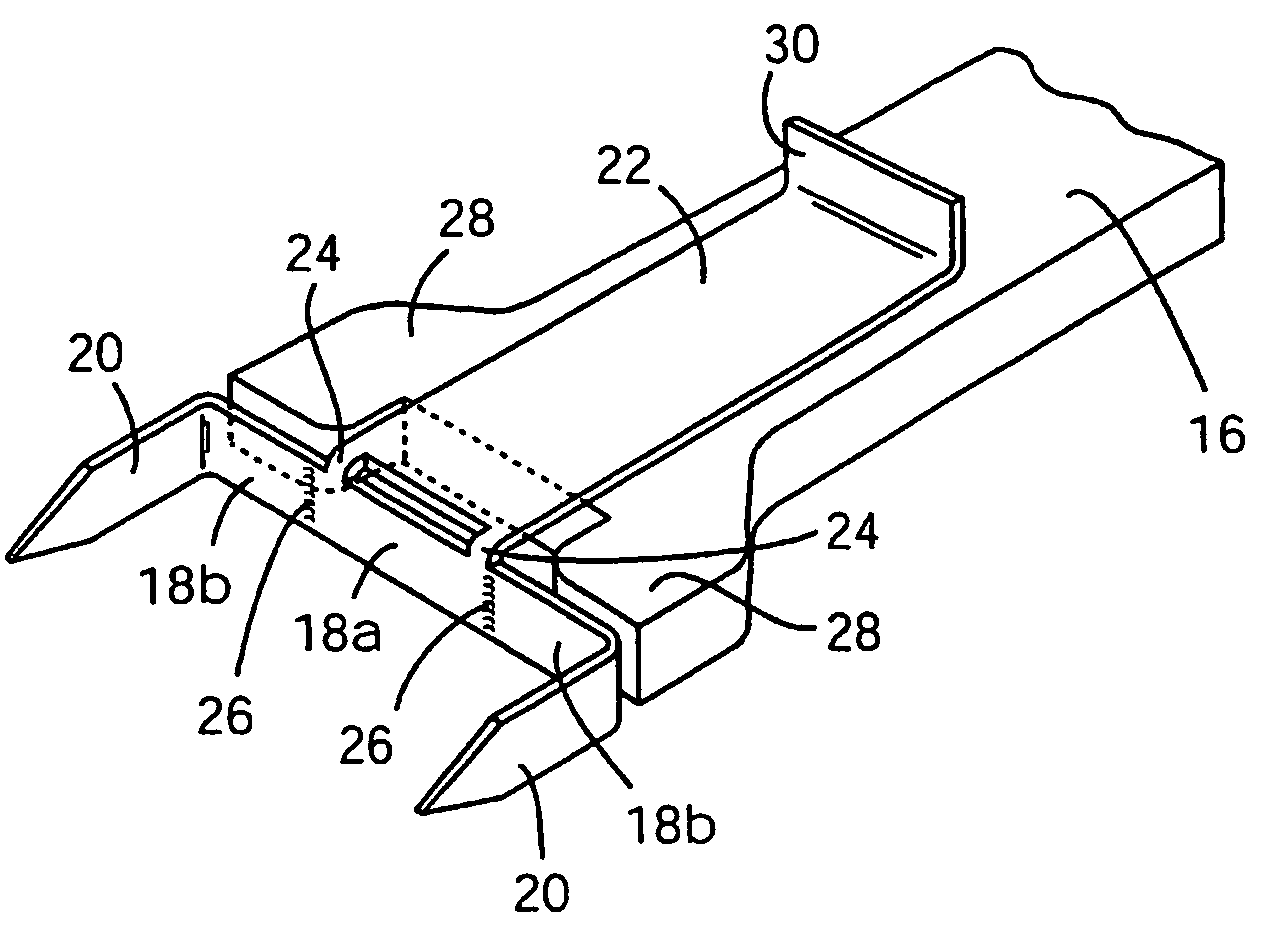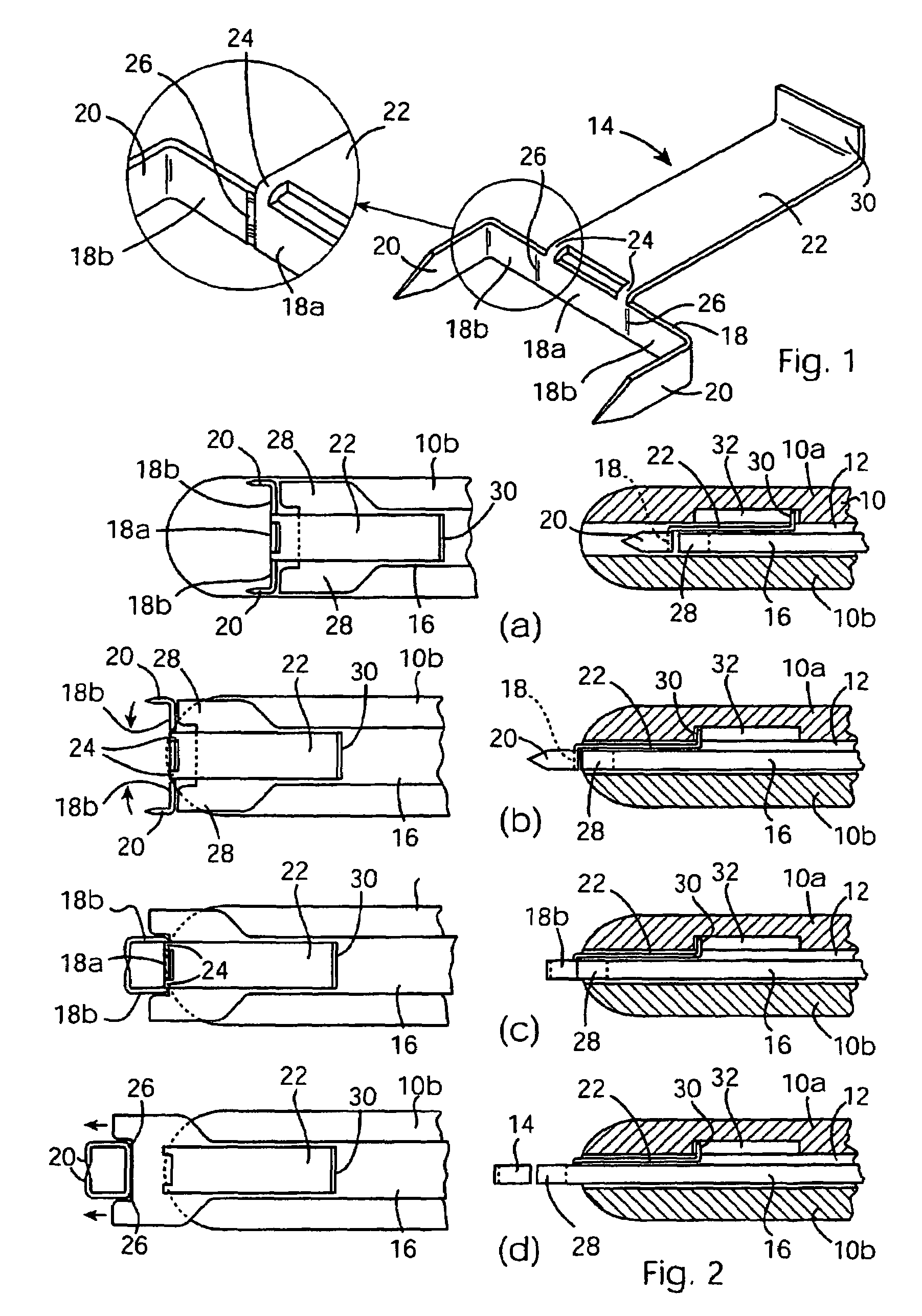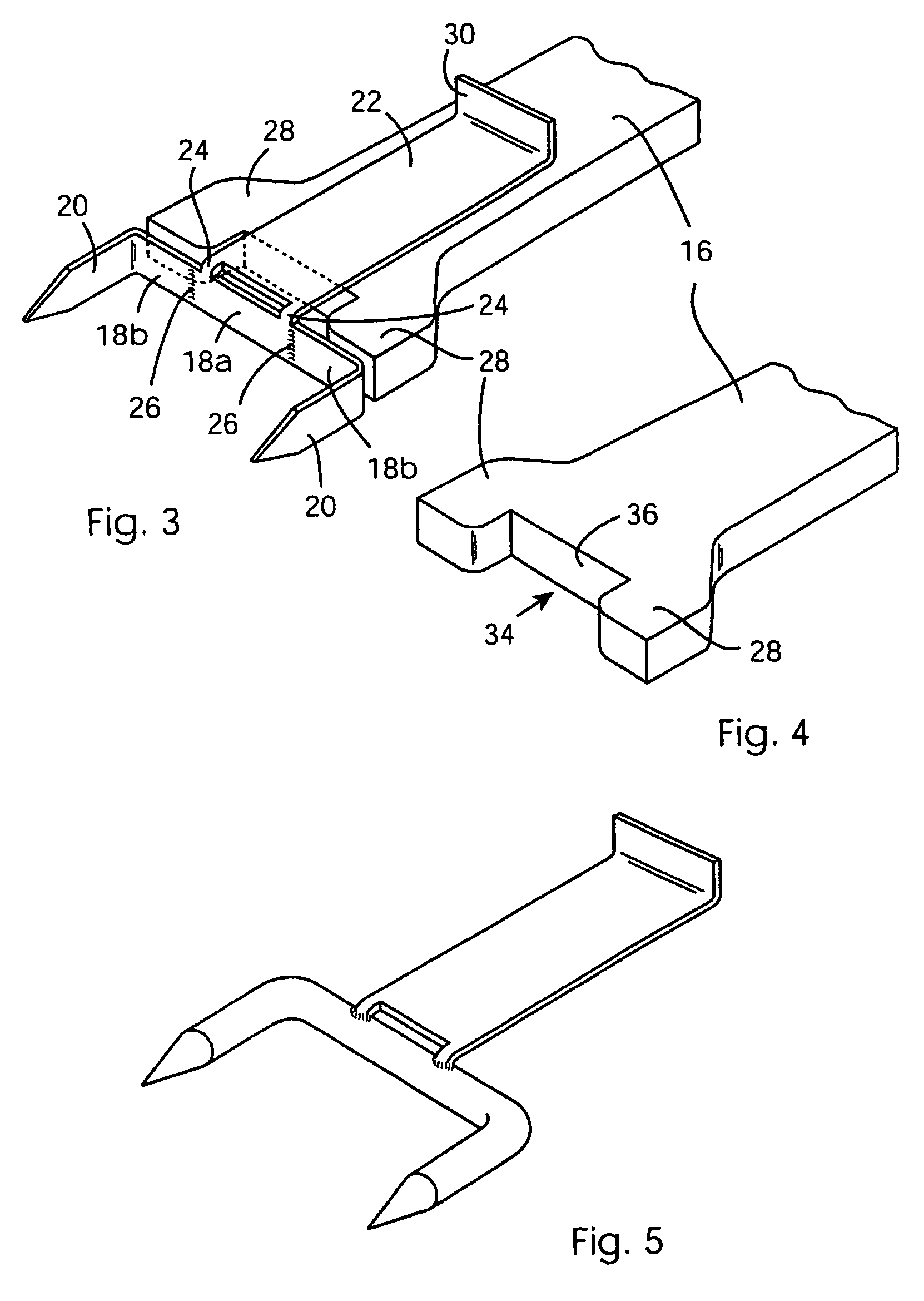Surgical stapling device
a stapling device and surgical technology, applied in the direction of surgical staples, paper/cardboard containers, manufacturing tools, etc., can solve the problems of inability to release staples from anvils, device being trapped in-situ, staples being trapped within the device and attached to the tissue, etc., to achieve the effect of ensuring tissue penetration and facilitating ejection of staples
- Summary
- Abstract
- Description
- Claims
- Application Information
AI Technical Summary
Benefits of technology
Problems solved by technology
Method used
Image
Examples
Embodiment Construction
[0018]In the drawings the same reference numerals have been used for the same or equivalent parts.
[0019]Referring to FIGS. 1 to 4, a surgical stapling device comprises an elongated housing or shaft 10 having upper and lower halves 10a and 10b defining between them a longitudinal channel 12 for slidably accommodating a staple 14 and a staple closing actuator 16 (in the plan views in the left hand column of FIG. 2 only the lower housing half 10b is shown). Only the free forward end of the housing 10 is shown in the drawings, since that is where the invention lies in the present embodiment. The rear end of the housing 10 is preferably formed with a pistol grip and the movement of the various components to be described may be effected by a trigger acting through a cam system. Such an arrangement is described in Irish Patent Application S2000 / 0722 which may be readily adapted to operate the device of the present embodiment.
[0020]The staple 14 is generally U-shaped, having a back 18 and t...
PUM
| Property | Measurement | Unit |
|---|---|---|
| Angle | aaaaa | aaaaa |
| Area | aaaaa | aaaaa |
| Bending strength | aaaaa | aaaaa |
Abstract
Description
Claims
Application Information
 Login to View More
Login to View More - R&D Engineer
- R&D Manager
- IP Professional
- Industry Leading Data Capabilities
- Powerful AI technology
- Patent DNA Extraction
Browse by: Latest US Patents, China's latest patents, Technical Efficacy Thesaurus, Application Domain, Technology Topic, Popular Technical Reports.
© 2024 PatSnap. All rights reserved.Legal|Privacy policy|Modern Slavery Act Transparency Statement|Sitemap|About US| Contact US: help@patsnap.com










